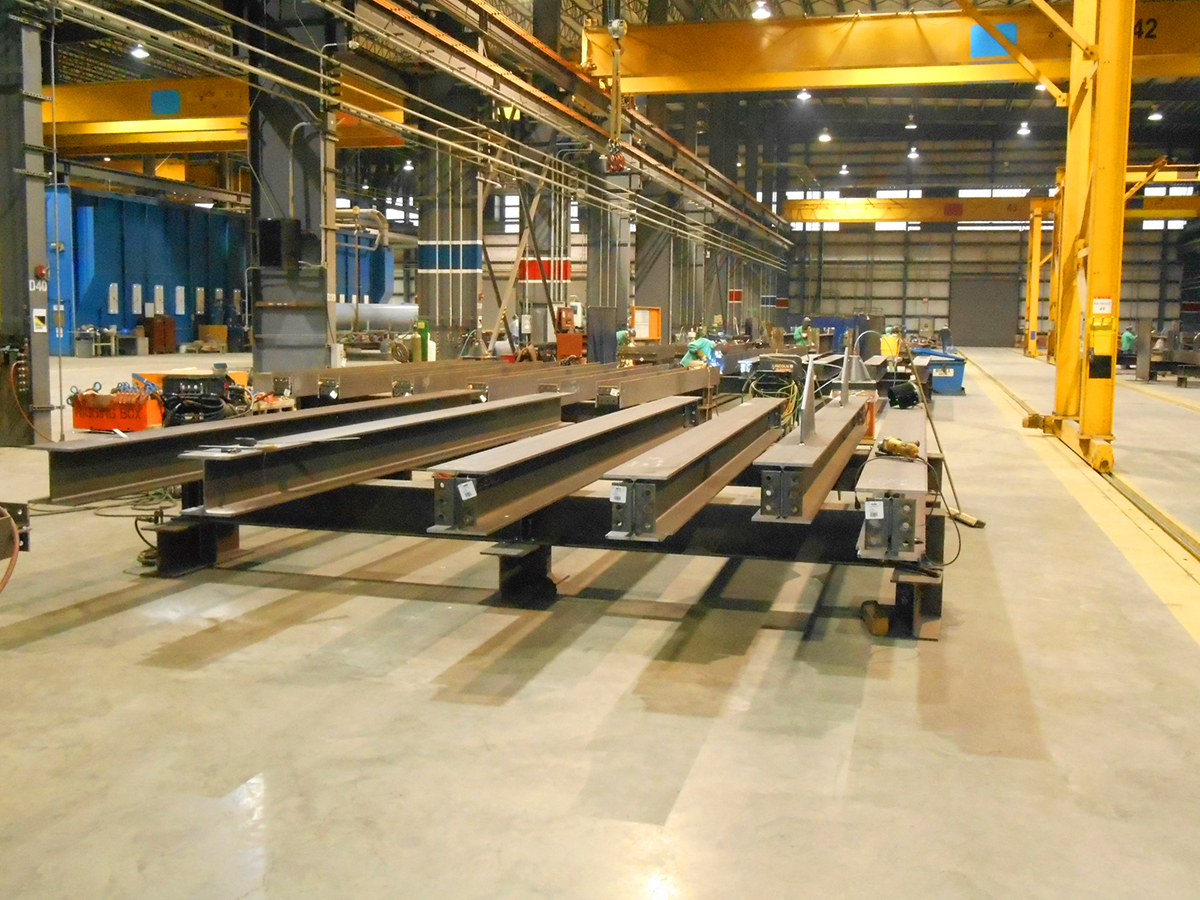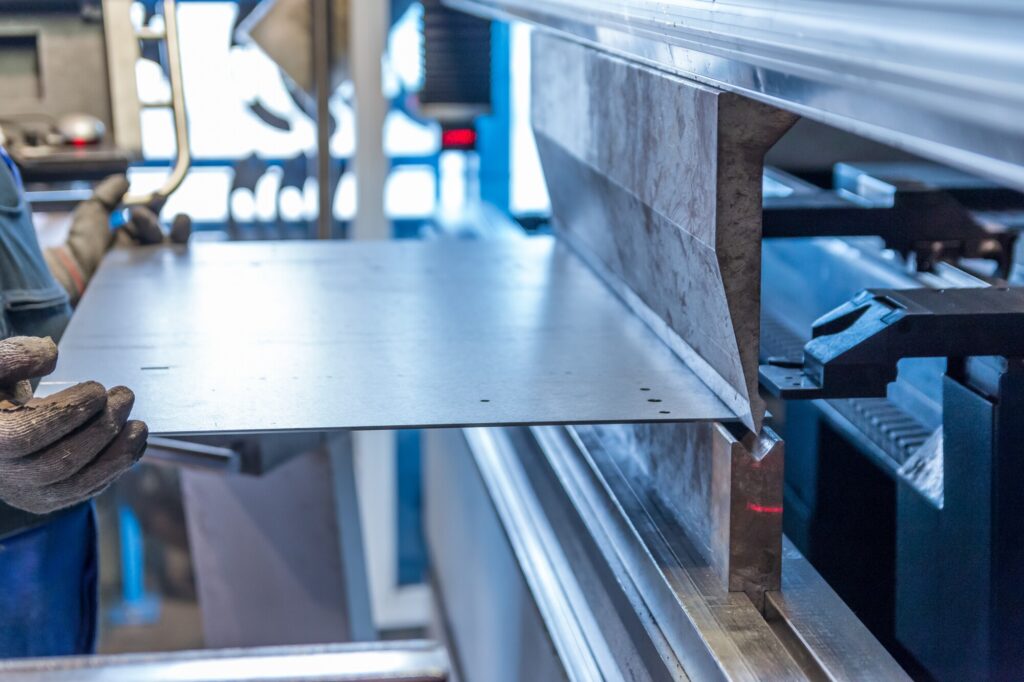Why Alpha Reo Is the Leading Choice for Steel Support
Comprehensive Analysis of Cutting-Edge Techniques in Steel Construction Market
As the steel fabrication market continues to advance, the combination of cutting-edge methods has actually ended up being vital for staying affordable and meeting the needs of modern-day manufacturing standards. From laser reducing developments to the usage of robotics and 3D printing in steel production, the landscape of fabrication strategies is swiftly changing. With each technology bringing its very own set of obstacles and advantages, a comprehensive evaluation of these techniques is extremely important for business intending to streamline their procedures, boost precision, and eventually, elevate the high quality of their steel manufacture result. In this vibrant sector where modern technology plays an essential duty, recognizing the subtleties of these cutting-edge strategies is not simply an alternative however a need for those seeking to build ahead in the ever-evolving globe of steel manufacture.
Laser Reducing Innovations
In the world of steel construction, laser reducing innovations have actually transformed the precision and effectiveness of metal shaping processes. By harnessing the power of focused laser light beams, producers can now accomplish exceptional levels of precision when puncturing various sorts of metals. This innovation allows complex layouts to be executed with very little material wastage, making it an affordable option for industries needing high precision components.
Among the crucial advantages of laser cutting is its ability to handle a vast array of materials, consisting of stainless-steel, aluminum, and carbon steel, easily. The procedure produces clean, burr-free sides, getting rid of the need for extra ending up steps. Moreover, the non-contact nature of laser cutting reduces the threat of product contamination, leading to better final result.
Additionally, laser cutting equipments can be programmed to make swift, exact cuts, significantly decreasing production time contrasted to standard cutting approaches. This rate and precision make laser cutting specifically suitable for automation settings where efficiency is vital. As innovation proceeds to breakthrough, laser cutting is positioned to play a progressively important function in the steel manufacture industry.

CNC Machining Innovations
The development of CNC machining modern technologies has ushered in a brand-new period of accuracy and effectiveness in the steel manufacture industry. Computer Numerical Control (CNC) devices have revolutionized steel manufacture by offering exceptional accuracy and repeatability in the production process. steel fixing. One of the essential innovations in CNC machining is the assimilation of advanced software systems that make it possible for real-time monitoring and adjustments, leading to improved performance and quality assurance
Additionally, the development of multi-axis CNC machines has actually enabled the manufacture of intricate steel components with elaborate styles that were formerly challenging to produce. These machines can perform a large range of machining operations, consisting of milling, exploration, turning, and grinding, all with high degrees of precision.
Additionally, the consolidation of automation and robotics in CNC machining has structured production processes, reduced preparations, and reduced the margin of mistake. This combination of cutting-edge technologies not only increases performance yet additionally makes sure regular high quality throughout all fabricated steel parts. In conclusion, CNC machining advancements remain to drive advancements in the steel manufacture industry, setting brand-new criteria for precision and productivity.
Automated Welding Technologies
Automated welding modern technologies have actually reinvented the steel construction market, improving efficiency and accuracy in the welding process. These innovative modern technologies utilize computer-controlled systems to automate the welding process, causing greater performance degrees and improved weld high quality. Among the key advantages anonymous of automated welding is the capability to carry out complicated welds with regular precision, decreasing the possibility of mistakes and revamp.
Robot welding systems are at the center of automated welding innovations, offering unrivaled rate and accuracy. These systems can handle a broad range of welding tasks, from simple to detailed, effortlessly (metal fabrication melbourne). By making use of advanced sensing units and software application, robotic welders can adapt to variants in product and joint geometry, making certain an uniform and dependable weld
Additionally, automated welding technologies boost work environment safety by decreasing the exposure of human welders to dangerous fumes and extreme heat. As the steel construction sector continues to evolve, incorporating automated welding innovations will be necessary for companies aiming to remain competitive and satisfy the expanding needs for top notch welded items.
Robotics Assimilation in Fabrication
Making use of robotic systems in manufacture procedures has come to be a crucial approach for boosting performance and precision in modern-day production settings. Robotics assimilation in steel manufacture supplies a myriad of advantages, including boosted efficiency, improved quality assurance, and enhanced safety measures. These innovative robot systems are equipped with advanced sensing units and programming abilities, allowing them to execute intricate tasks with a high degree of accuracy and repeatability.
One of the vital benefits of robotics assimilation in steel construction is the ability to automate repeated tasks, such as product handling, cutting, welding, and setting up procedures. This not just quickens manufacturing cycles but additionally decreases the risk of human error, causing greater general product high quality. Furthermore, robotics can run 24/7, dramatically browse around here boosting production output and meeting tight job target dates.

3D Printing in Steel Production
Having actually revolutionized the steel manufacture industry through robotics assimilation, the growing exploration of 3D printing in steel production is positioned to more development the world of modern manufacturing techniques. 3D printing, likewise called additive manufacturing, uses extraordinary style freedom and complexity, making it possible for the production of complex steel frameworks that were formerly unattainable with standard manufacturing methods. By utilizing computer-aided design (CAD) software application, suppliers can precisely manage the layer-by-layer deposition of steel product, resulting in components with boosted geometries and capabilities.
One of the essential benefits of 3D printing in steel manufacturing is its capacity to lower product waste significantly. Unlike subtractive manufacturing procedures where excess product is trimmed away, 3D printing just makes use of the required amount of steel required for the final part. This performance not only results in set you back savings but likewise straightens with sustainable manufacturing practices by minimizing environmental influence.
In addition, 3D printing allows fast prototyping and customization, enabling for the production of small sets of complex steel parts with short lead times. As the innovation remains to mature and come to be more available, its integration right into mainstream steel construction procedures is anticipated to drive development and efficiency across the market.
Conclusion
Finally, the steel manufacture market has seen substantial advancements in techniques such as laser cutting, CNC machining, automated welding, robotics integration, and 3D printing. These innovative innovations have transformed the way steel items are produced, leading to boosted cost-effectiveness, efficiency, and accuracy. Continued financial investment in these cutting-edge methods is essential for the sector to remain competitive and satisfy the needs of modern production processes.
As the steel construction market continues to develop, the assimilation of innovative strategies has come to be vital for staying affordable and meeting the demands of modern-day production standards.One of the vital advantages of laser cutting is its capability to manage a vast array of products, including stainless steel, light weight aluminum, and carbon steel, with simplicity.Automated welding modern technologies have actually changed the steel fabrication market, improving performance and accuracy in the welding process.Having actually transformed the steel construction market via robotics assimilation, the expanding exploration of 3D printing in steel production is positioned to additional breakthrough the world of modern-day production methods.In verdict, the steel manufacture industry has seen substantial improvements in techniques such as laser cutting, CNC machining, automated Web Site welding, robotics assimilation, and 3D printing.